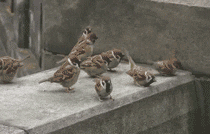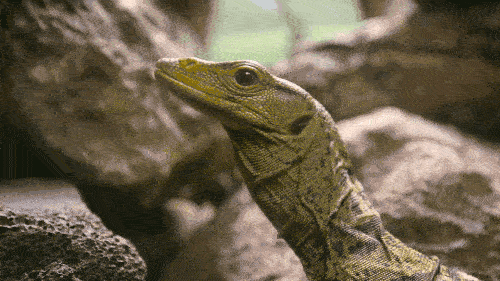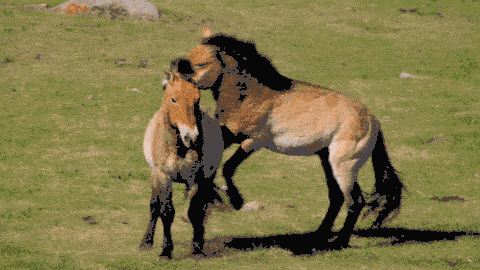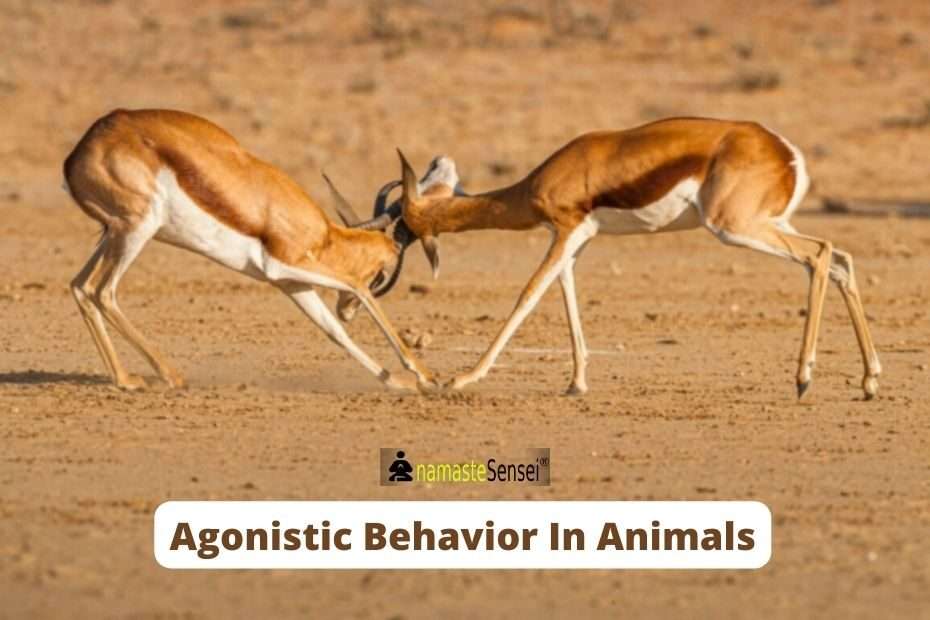Explain Agonistic Behavior in Animals | Agonistic behavior in Biology

Agonistic behavior in animals refers to any interaction among individuals of the same or different species that causes them to fight, struggle, and/or compete with one another. In biology, we can see agonistic behavior in many animals, and we can even find it in insects like ants and bees! Some species use agonistic behavior in order to compete for resources, while others use it to establish dominance over other members of their species.
In biology and zoology, we can study this type of behavior through experiments on lab animals such as rats and mice, but it also occurs in certain species naturally within wild populations.
Topics Covered
Agonistic Behavior Definition Biology
Agonistic behavior in biology is a form of aggressive, competitive interaction between two animals. It may include anything from simple acts of dominance or submission to fighting for resources such as territory or food. The role of agonistic behavior varies depending on the type and the animal involved.
Agonistic Behavior examples in Animals (Primates), Birds, reptiles & Mammals

Somes Examples of Agonistic Behavior in Biology are given below:
- Examples in Primates
- Examples in Birds
- Examples in Reptiles
- Examples in Mammals
-
Examples in Primates

Studies done on primates have shown that females use aggression to get a better territory, maternal aggression or sponging takes place within the group, especially with new mothers. Adult males use competition for a social position as a type of agonistic behavior in animals.
One study done by C.E. Leigh, A.L Goldizen, and J.S Rose found that male baboons have higher levels of sexual arousal during the initial stages of encounters than female baboons do but that this quickly changes when conflict arises-during combat males are more aggressive than females are, and both partners engage each other sexually at the same levels during peacetime encounters.
In species where there is sex outside of the breeding season, males and females can also display different types of agonistic behaviors in animals. Male red deer (Cervus elaphus) will attack estrous females while they are still competing over mates themselves; however, if they are given time to rest, they will not attack again until their own mating attempts have been rebuffed again.
The outcomes of these types of agonistic behaviors in animals affect the reproductive success rate of both sexes and many factors like size and age may play into whether a particular animal wins or loses an encounter.
-
Examples of Agonistic behavior in Birds

The most common example of agonistic behavior in birds is the pecking order in a flock or colony. The pecking order states that the bird with the highest rank will feed first, have access to best-roosting spots, and will choose when others may fly. Birds of lower rank must wait for scraps from higher-ranked birds. In most cases, once a bird has reached its full size, it will rise in rank within the group.
However, there are some cases where a young bird will replace an older one by pushing them off their perch (aggression) or by attacking them on the ground (intraspecific aggression).
-
Examples in Reptiles

Many reptiles, such as iguanas, exhibit agonistic behavior. For example, a male iguana may lie on top of a female to establish dominance. Sometimes, the female will submit and let the male remain on top; in others, she will resist until he eventually submits to her.
We can also see this type of behavior in other species of reptiles, such as monitor lizards. Male monitors are much larger than females and often act aggressively toward them by lunging, biting, or chasing them. The goal is usually to prevent the female from running away with another male. Sometimes this chase results in bites which can cause injuries for both males and females.
The agonistic behavior of these animals has many implications for their survival because males that are dominant have an advantage when gaining food or territories, finding mates, defending their territory from rivals (which helps ensure access to food), and fighting off predators (such as other males).
-
examples of agonistic behaviour in mammals (horses and dogs)

Agonistic behavior in Horses – There are many examples of agonistic behavior in horses. Horses fighting each other may use their teeth to bite the opponent or their hoofs to kick them. If there are two stallions competing for a mare, they may try to ram each other with their heads and push against each other with their chests.
Some stallions will also try to nip at the back of a rival’s legs, while others will rear up on their back legs to kick the opponent’s belly.
Agonistic behavior in Dogs – Agonistic behavior in dogs can be seen when two dogs meet on the street or in a park. The most common form of agonist behavior in these situations is usually snarling, growling, and baring their teeth. Sometimes they might even fight by using their claws to rake the face or body of their opponent
Other forms of agonistic behavior include staring into one another’s eyes, standing over one another, backing away from one another, and wagging tails.
These behaviors are mostly intended to avoid physical contact or lessen its intensity but if that fails then both parties might end up rolling around biting and scratching each other
In this way, we can see that agonistic behavior plays a key role in social hierarchies among animals.
Types of Agonistic Behavior In Animals
Aggressive behavior is any behavior that inflicts or attempts to inflict, damage, or harm another living being. This can include behaviors such as fighting, biting, and use of aggression.
Aggression may be an instinct that can be found across different species of animals. The most common type of aggressive behavior seen in animals is dominant aggression and territorial aggression.
Dominance aggression refers to when an animal uses their strength to assert dominance over other members of the same species within its social group by using physical violence.
Territorial aggression is when an animal defends its territory against intruders of the same species with violent attacks.
Advantages & Disadvantages of Agonistic Behavior in Biology
Advantages
There are many advantages of agonistic behavior in animals. In the animal kingdom, agonistic behavior can establish dominance. This can also increase reproductive opportunities, search for food, or keep competitors away from one’s own territory. One advantage of agonistic behavior in animals is that they use their instincts to react without thinking or being able to control themselves.
Disadvantages
There are many disadvantages to agonistic behavior as well. It can lead to injuries such as broken bones or wings, hematomas and hemorrhages, lacerations and bruising; feathers ripped out; blood spills onto eggs, rendering them uneatable; internal ruptures leading to death; permanent lesions which can lead to deformities in chicks; injuries at rookeries can spread disease from one species to another.
Conclusion
Animals are more complex than we may give them credit for. For example, many animals exhibit agonistic behavior. Some of the most common examples of this include dogs fighting over territory, cats fighting for food, or even horses sparring to establish dominance.
Agonistic behavior can result from instinct or an evolutionary adaptation that has helped these species survive. Understanding these behaviors allows us to understand the animal’s needs better and provide them with what they need to be happy and healthy.
Congratulations, you have read the complete article about the agonistic behavior in animals. If you have any doubts or queries, feel free to comment below. We will respond as soon as possible.
Or Email Us At [email protected]
Any topic you want us to cover? Let us know.
